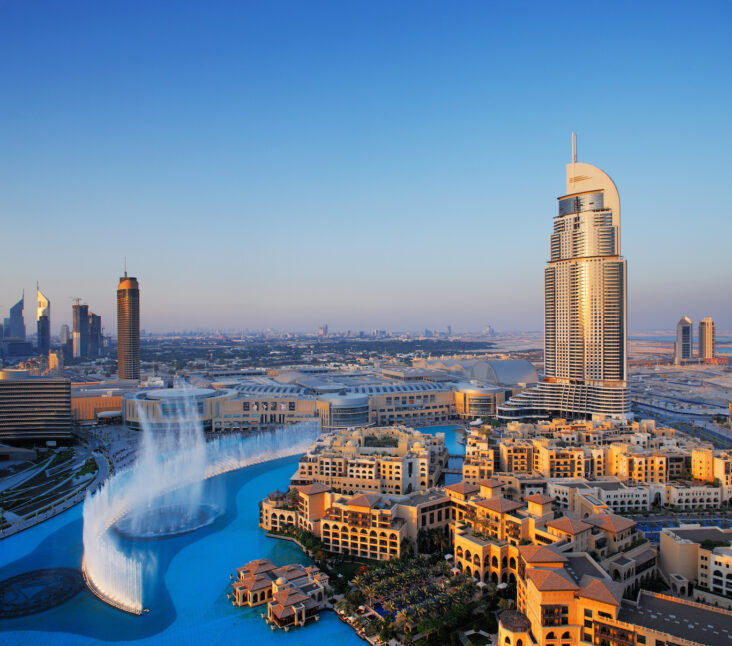Tourism spreaheads Dubai economic recovery

Despite global conflicts and recent regional unrest, Dubai’s economy, driven by key sectors, remained steadfast in its recovery. The performance of the tourism sector reflects as much, a new report showed on Thursday.
According to Cavendish Maxwell’s Dubai’s Hospitality Sector Market Performance, in 2023, the city welcomed 17.15 million overnight visitors, surpassing its previous high of 16.73 million in 2019 and the 14.36 million recorded in 2022. Moreover, the tourism sector’s GDP contribution is expected to have nearly doubled this year from 2021 to 36.1 per cent, and is forecasted to reach 2019 levels once again, by 2024. To continue driving the upward trajectory of tourism in the country, the UAE has set ambitious goals in its National Tourism Strategy 2031, aiming to position itself as a top global destination by 2031.
The strategy aims to boost the tourism sector’s contribution to GDP by Dh450 billion, attract investments worth Dh100 billion, and welcome 40 million hotel guests annually by 2031. It also naturally plays into the Dubai Economic Agenda – D33.
In early 2023, the Dubai government unveiled its D33 Economic Agenda, with the goal of doubling the city’s economy within the next decade and solidifying its position among the top three global cities for travel and business. The tools underpinning this initiative are increasing foreign trade and foreign direct investment.
Dubai Tourism’s recent performance and future ambitions have been recognised globally, with the city being ranked as the No. 1 global destination in the TripAdvisor Travellers’ Choice Awards 2024 for the third consecutive year.
Additionally, Dubai has been ranked first regionally and sixth globally as the best city in the world in the World’s Best Cities Report 2024. “These accolades underscore Dubai’s commitment to tourism excellence and its status as a top global destination. The growth recorded by Dubai Tourism in 2023 has certainly played an essential role in giving the city’s hospitality and real estate sectors a solid boost,” the report said.
Dubai’s airports: continued dominance
All air traffic in and out of Dubai is managed by two international airports: Dubai International Airport (DXB) and Al Maktoum International Airport (DWC). In 2023, DXB surpassed pre-pandemic levels of passenger traffic, handling 86.9 million passengers. Forecasts suggest that by the end of 2024, this number could reach an estimated 88.8 million, nearing the record high of 89.1 million set in 2018.
Dubai’s appeal as a tourist destination has been steadily increasing. In 2022, the city welcomed 14.36 million international overnight visitors, marking a 97 per cent increase from 2021 and reaching 86 per cent of pre-pandemic levels. This upward trend continued into 2023, with 17.15 million visitors, a 19.4 per cent year-on-year increase, data showed.
In Q3 2023, India remained the largest source market for overnight visitors in Dubai, accounting for 14 per cent of the total, followed by Saudi Arabia, the UK, and Russia, each at 7 per cent.
Among the top ten source markets, China saw a 304.4 per cent year-on-year increase, followed by Russia at 77.5 per cent and Germany at 49.6 per cent. Notably, Saudi Arabia and Oman experienced drops in visitor numbers by 5.6 per cent and 24.9 per cent, respectively.
Keeping up with the rise in tourism levels in Dubai, the hospitality industry has successfully adjusted supply to cater to increased demand.
By the first half of 2023, the total number of hospitality establishments in Dubai had risen to 813, with 148,711 keys. Towards the end of the year, the total number of establishments stood at 820, with 149,685 keys ready to welcome guests.
“Our estimates suggest that 2024 will see the opening of 31 new hotels in Dubai, while 2025 is expected to add 16 new hotels to the mix. This translates to a cumulative total of 851 by the end of 2024 and 867 by the end of 2025,” Cavendish Maxwell analysts wrote.
On the whole, the Dubai Market made a clear recovery in terms of top-line performance with an average growth of 6.6 per cent in RevPAR compared to 2022 figures. All segments achieved an increase year-on-year with the Upscale sector experiencing the largest average growth of around 13 per cent in Revenue Per Available Room (RevPAR).


